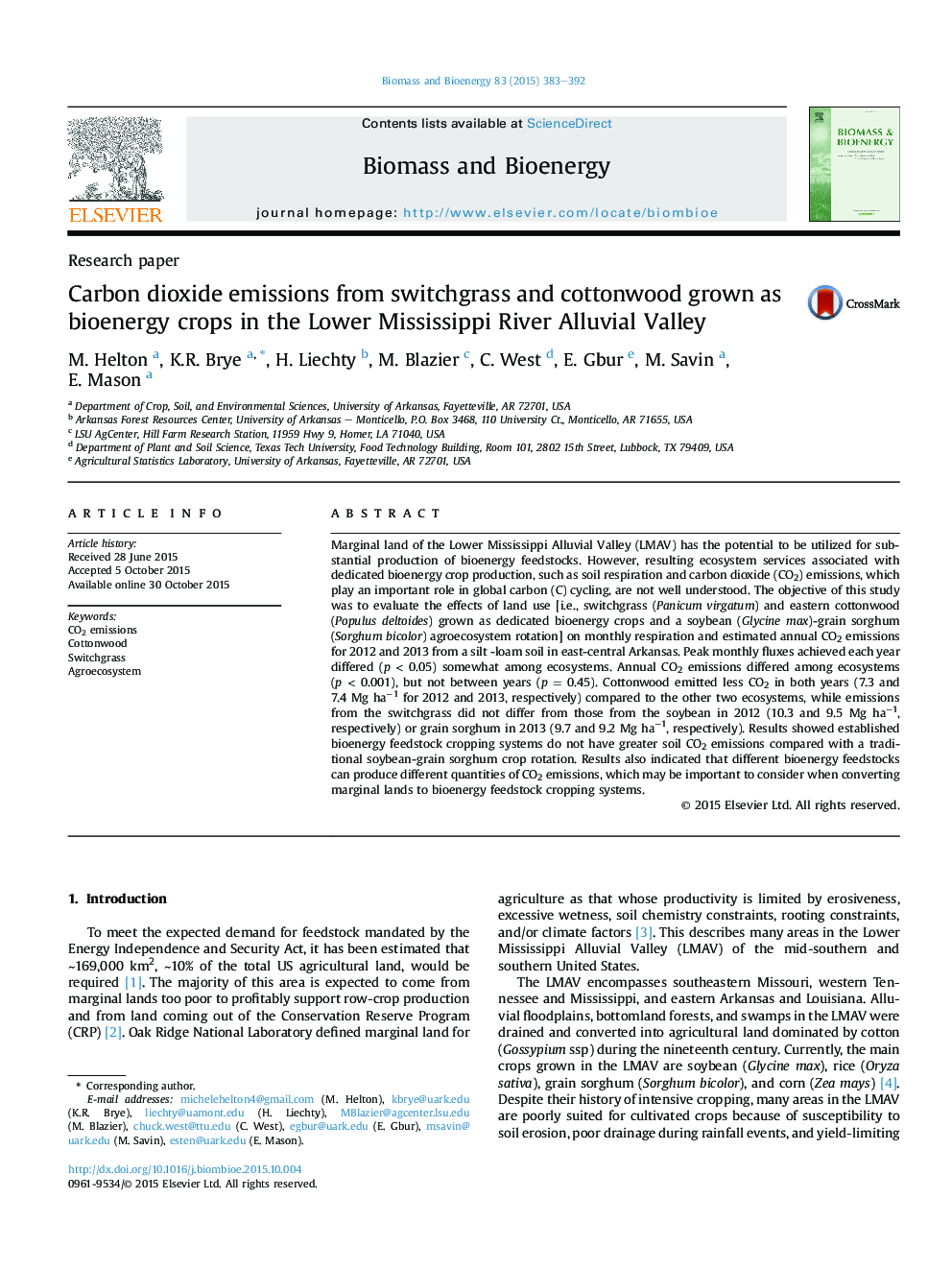| Article ID | Journal | Published Year | Pages | File Type |
|---|---|---|---|---|
| 7063703 | Biomass and Bioenergy | 2015 | 10 Pages |
Abstract
Marginal land of the Lower Mississippi Alluvial Valley (LMAV) has the potential to be utilized for substantial production of bioenergy feedstocks. However, resulting ecosystem services associated with dedicated bioenergy crop production, such as soil respiration and carbon dioxide (CO2) emissions, which play an important role in global carbon (C) cycling, are not well understood. The objective of this study was to evaluate the effects of land use [i.e., switchgrass (Panicum virgatum) and eastern cottonwood (Populus deltoides) grown as dedicated bioenergy crops and a soybean (Glycine max)-grain sorghum (Sorghum bicolor) agroecosystem rotation] on monthly respiration and estimated annual CO2 emissions for 2012 and 2013 from a silt -loam soil in east-central Arkansas. Peak monthly fluxes achieved each year differed (p < 0.05) somewhat among ecosystems. Annual CO2 emissions differed among ecosystems (p < 0.001), but not between years (p = 0.45). Cottonwood emitted less CO2 in both years (7.3 and 7.4 Mg haâ1 for 2012 and 2013, respectively) compared to the other two ecosystems, while emissions from the switchgrass did not differ from those from the soybean in 2012 (10.3 and 9.5 Mg haâ1, respectively) or grain sorghum in 2013 (9.7 and 9.2 Mg haâ1, respectively). Results showed established bioenergy feedstock cropping systems do not have greater soil CO2 emissions compared with a traditional soybean-grain sorghum crop rotation. Results also indicated that different bioenergy feedstocks can produce different quantities of CO2 emissions, which may be important to consider when converting marginal lands to bioenergy feedstock cropping systems.
Related Topics
Physical Sciences and Engineering
Chemical Engineering
Process Chemistry and Technology
Authors
M. Helton, K.R. Brye, H. Liechty, M. Blazier, C. West, E. Gbur, M. Savin, E. Mason,
